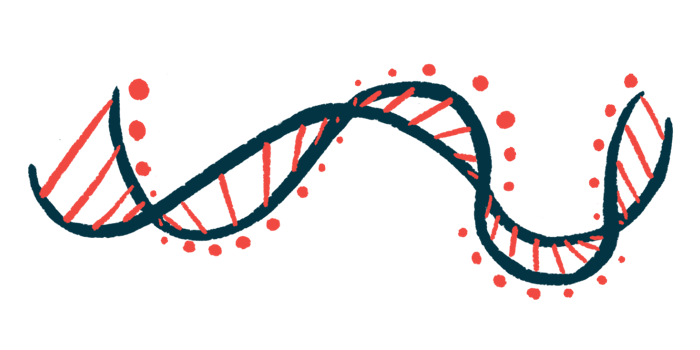10 New Genetic Regions Linked to Increased Risk of Sjögren’s in Study
Greater risk found for people of European ancestry

Ten new genetic regions, or loci, were found to be linked to an increased risk of Sjögren’s syndrome in people whose ancestry traces to Europe, according to a genome-wide association study (GWAS).
These findings nearly double the total number of known risk loci from 12 to 22, in what researchers claim to be “the largest GWAS to date of Sjögren’s of European ancestry.”
People with multiple variants (mutations) in these loci were more than 12 times more likely to develop the chronic autoimmune disorder. And the variants more likely to raise the risk were predicted to play a role in how genes are turned on and off in immune cells and cells of the salivary glands, both of which go awry in Sjögren’s.
Further mapping of these loci could help develop ways “to improve early diagnosis and treatment,” the researchers noted.
The study, “Genome-wide association study identifies Sjögren’s risk loci with functional implications in immune and glandular cells,” was published in the journal Nature Communications.
Investigating Sjögren’s risk factors
Sjögren’s occurs when the immune system mistakenly launches an attack against healthy cells in the body. Because this usually happens to cells of the glands that make tears and saliva, the disorder’s main symptoms are dry eyes and a dry mouth. When other cells in the body are attacked, there may be systemic symptoms, such as fatigue and pain.
While it is not clear why the immune system spins out of control, this may be linked, at least in part, to genetics. Some people may carry variants in their genes that make them more susceptible to developing an autoimmune disease like Sjögren’s.
A type of study like a GWAS can help identify variants that are linked to an increased risk for a particular disease. It is done by scanning the genome — the entire set of DNA instructions found in cells — of many people to look for variants that occur more frequently in those with a specific disease than in those without it. Once such alterations are identified, they are used to search for nearby variants that could play a direct role in the disease.
To date, 12 loci linked to an increased risk of Sjögren’s have been identified using this approach — nine of which occur in people of European ancestry. However, the number of risk loci is far lower (about 10 times) than that for other autoimmune diseases.
To find out whether there are more risk loci for Sjögren’s, an international team of researchers drew on data from a total of 3,885 patients with Sjögren’s and 23,725 people with ancestry in Europe who did not have the disease and served as controls. Altogether, these individuals from many countries, including Australia, Austria, France, Germany, Hungary, Italy, Norway, Spain, Sweden, Switzerland, the U.K., and the U.S.
The analysis identified seven new risk loci for Sjögren’s, in addition to four of the nine identified previously.
Because some potential risk loci overlapped with those present in an ImmunoChip, researchers scanned the genome of an additional 619 patients with Sjögren’s and 6,171 control individuals using the ImmunoChip. An ImmunoChip contains a collection of tiny probes that pair with specific loci of the genome. Its information can be combined with that of a GWAS to identify more risk loci.
Using this approach, the team identified three new risk loci, for a total of 10.
To understand how these risk loci might contribute to how Sjögren’s is triggered and develops, researchers ran a check through their variants, also known as single nucleotide polymorphisms (SNPs).
They found that SNPs in these risk loci correlated strongly with those found in other autoimmune diseases, including systemic lupus erythematosus and rheumatoid arthritis.
A 12 times greater risk
A polygenic risk score revealed that people with multiples of these SNPs were more than 12 times more likely to develop Sjögren’s. This risk score calculates a person’s chances of developing a particular disease based on the presence or absence of multiple SNPs, without taking any other factors into account. It can be used as a measure of a disease’s genetic burden.
Variants lying in a region known as the human leukocyte antigen (HLA) accounted most for the genetic burden. The HLA region comprises genes that are important for how the immune system primes cells for an immune attack. When researchers removed SNPs from the HLA region from the polygenic risk score, the risk fell by more than half (from 12.08 to 5.54).
To search for nearby variants that could play a direct role in the disease, researchers used computer programs and bioinformatics to identify the relative locations of other variants or genes.
“Our deep bioinformatic analyses revealed new potential functional implications for the novel risk loci and further expanded the list of implicated genes to [more than] 40,” the researchers wrote.
They identified variants predicted to play a role in how genes are turned on and off in immune cells, which could change how immune cells survive, grow in number, and work, as well as in how they respond to stress and inflammation.
Moreover, other variants were linked to cells of the salivary glands. This also included variants that link salivary glands to infection by the Epstein-Barr virus (EBV). That virus, also linked to multiple sclerosis, has been suggested to contribute to Sjögren’s by increasing the number of immune cells that attack the body’s own healthy cells.
“Analyzing genetic susceptibility in the context of salivary gland function may provide additional insights into why the salivary gland becomes a target tissue in Sjögren’s,” the researchers wrote.







